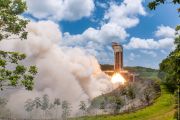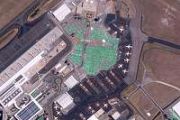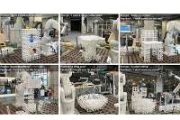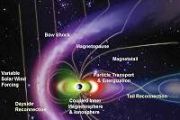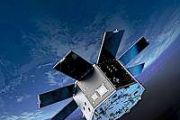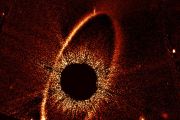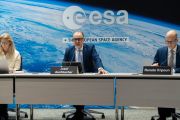
Copernical Team
Ariane 6 revealed on its launch pad in preparation for hot-firing tests
 As part of the combined tests campaign, the Ariane 6 mobile gantry was retracted on June 22, unveiling the launch vehicle on its launch pad. During a rehearsal representative of a real launch sequence, the removal of the mobile gantry marks the completion of the functional tests performed so far and precedes ignition of the core stage Vulcain 2.1 engine on the launch pad. The rehearsal serves to
As part of the combined tests campaign, the Ariane 6 mobile gantry was retracted on June 22, unveiling the launch vehicle on its launch pad. During a rehearsal representative of a real launch sequence, the removal of the mobile gantry marks the completion of the functional tests performed so far and precedes ignition of the core stage Vulcain 2.1 engine on the launch pad. The rehearsal serves to Safran and Terran Orbital sign a MoA to produce satellite electric propulsion systems in US
 Safran Electronics and Defense and Terran Orbital (NYSE: LLAP) announced they have signed a Memorandum of Agreement to study and validate the prerequisites for production of a new generation of electric propulsion systems for satellites in the United States, based on Safran's PPSX00 plasma thruster.
Safran Electronics and Defense, via Safran Spacecraft Propulsion, and Terran Orbital will u
Safran Electronics and Defense and Terran Orbital (NYSE: LLAP) announced they have signed a Memorandum of Agreement to study and validate the prerequisites for production of a new generation of electric propulsion systems for satellites in the United States, based on Safran's PPSX00 plasma thruster.
Safran Electronics and Defense, via Safran Spacecraft Propulsion, and Terran Orbital will u Rocket Lab to Launch Multiple Satellites as Part of Upcoming Recovery Mission
 Rocket Lab USA, Inc. (Nasdaq: RKLB) reports that its next Electron mission will deploy seven satellites to space and include an attempt to recover the rocket's booster after launch. The 'Baby Come Back' mission, Rocket Lab's 39th Electron launch, is scheduled to deploy from Pad A at Rocket Lab Launch Complex 1 in Mahia, New Zealand during a launch window that opens July 14, 2023 UTC.
Rocke
Rocket Lab USA, Inc. (Nasdaq: RKLB) reports that its next Electron mission will deploy seven satellites to space and include an attempt to recover the rocket's booster after launch. The 'Baby Come Back' mission, Rocket Lab's 39th Electron launch, is scheduled to deploy from Pad A at Rocket Lab Launch Complex 1 in Mahia, New Zealand during a launch window that opens July 14, 2023 UTC.
Rocke The ship sank. Or did it? Titanic misinformation swirls
 The Titanic inspired a tear-jerking blockbuster and expeditions to its watery gravesite - including a fatal one this week - but viral TikTok videos peddle a stunning conspiracy theory: the ship never sank.
More than a century after it went down in the North Atlantic Ocean, wild myths and urban legends about the luxury liner have continued to swirl, including that it was doomed by the curse
The Titanic inspired a tear-jerking blockbuster and expeditions to its watery gravesite - including a fatal one this week - but viral TikTok videos peddle a stunning conspiracy theory: the ship never sank.
More than a century after it went down in the North Atlantic Ocean, wild myths and urban legends about the luxury liner have continued to swirl, including that it was doomed by the curse SpaceX tender offer values it at around $150bn: report
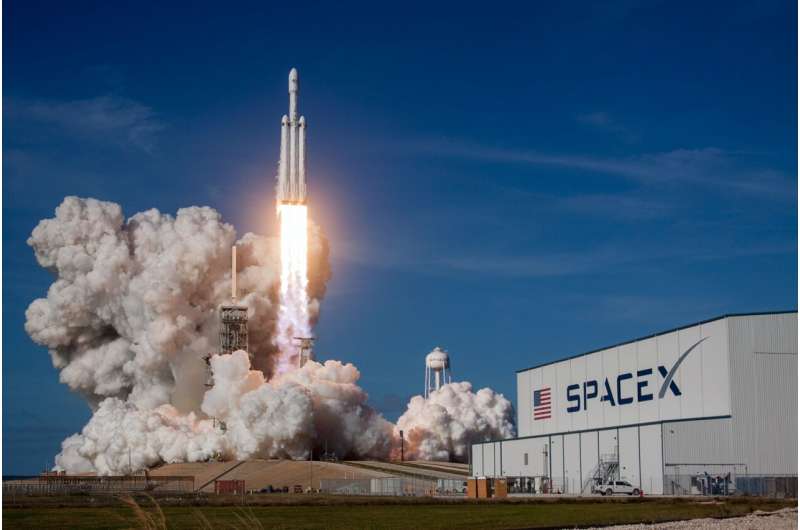
Elon Musk's company SpaceX is offering to sell insider shares at a price that lifts its valuation to around $150 billion, according to a Bloomberg News report Friday.
The company—the first private company to send astronauts into orbit, among many other firsts—is initially seeking a $750 million tender offer, the report added.
Its valuation has climbed in recent years as it raised billions to finance its work, and according to Bloomberg, SpaceX is offering shares at over $80 apiece.
A CNBC report in January noted that SpaceX was raising $750 million in a round of funding that valued it at $137 billion.
According to Bloomberg News, SpaceX has around $5 billion of cash on its balance sheet.
In April, SpaceX saw the most powerful rocket ever built—Starship—blow up on its first flight, although Musk congratulated his SpaceX team on the test of the next-generation spacecraft designed to send astronauts to the Moon, Mars and beyond.
SpaceX also successfully deployed more than 50 added satellites on Friday, boosting a collection used to beam broadband internet coverage, according to reports.
Paris Air Show 2023 – Highlights of the week
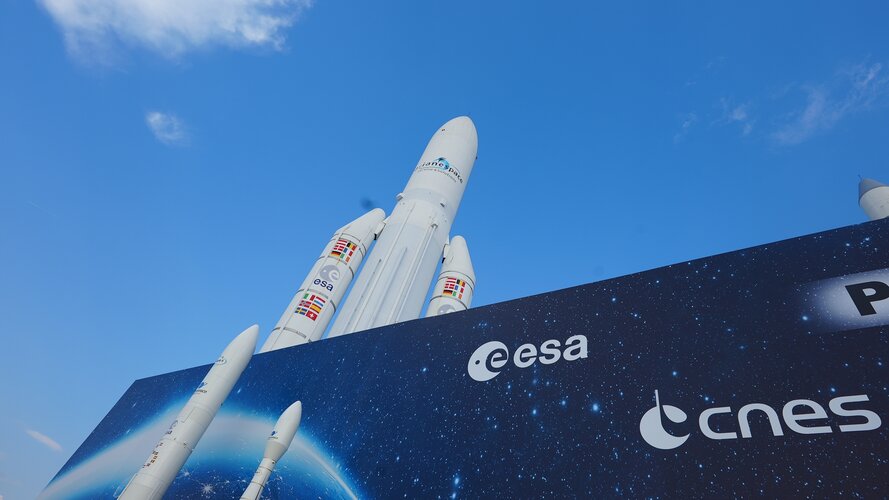 Video:
00:01:40
Video:
00:01:40
From Monday 19 to Sunday 25 June, at the ‘Space Pavilion’ of Paris Air Show 2023, ESA and CNES present ambitious new projects in space exploration, astronautics, Earth observation and security-related applications.
New date for Ariane 5 rocket's final launch after delay
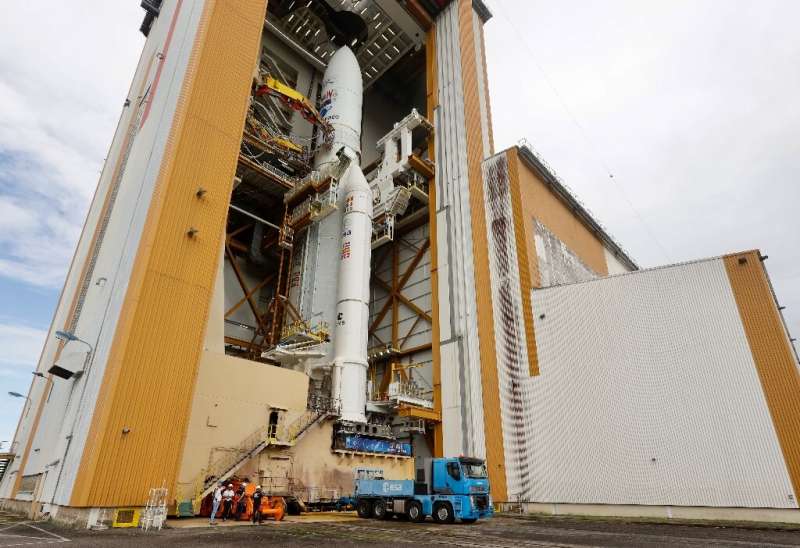
Europe's workhorse Ariane 5 rocket will blast off for the final time on July 4, its operator Arianespace said on Friday, after a previous launch was called off due to a technical problem.
After 27 years of launches, the 117th and last mission to take off on an Ariane 5 rocket was originally scheduled for June 16 from Europe's spaceport in Kourou, French Guiana, but was called off the day before.
Europe’s Astronaut Centre welcomes winners of spacesuit design competition
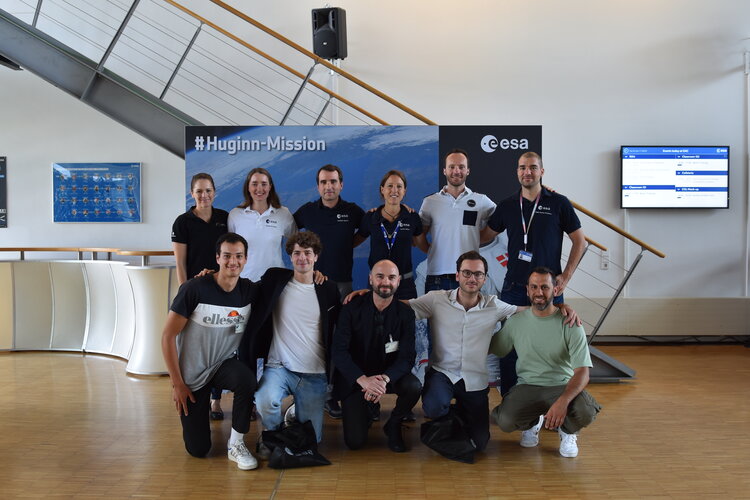
Molecular filament shielded young solar system from supernova
 Isotope ratios found in meteorites suggest that a supernova exploded nearby while the Sun and Solar System were still forming. But the blast wave from a supernova that close could have potentially destroyed the nascent Solar System. New calculations shows that a filament of molecular gas, which is the birth cocoon of the Solar System, aided the capture of the isotopes found in the meteorites, wh
Isotope ratios found in meteorites suggest that a supernova exploded nearby while the Sun and Solar System were still forming. But the blast wave from a supernova that close could have potentially destroyed the nascent Solar System. New calculations shows that a filament of molecular gas, which is the birth cocoon of the Solar System, aided the capture of the isotopes found in the meteorites, wh Never before seen way to annihilate a star
 Astronomers studying a powerful gamma-ray burst (GRB) with the Gemini South telescope, operated by NSF's NOIRLab, may have detected a never-before-seen way to destroy a star. Unlike most GRBs, which are caused by exploding massive stars or the chance mergers of neutron stars, astronomers have concluded that this GRB came instead from the collision of stars or stellar remnants in the jam-packed e
Astronomers studying a powerful gamma-ray burst (GRB) with the Gemini South telescope, operated by NSF's NOIRLab, may have detected a never-before-seen way to destroy a star. Unlike most GRBs, which are caused by exploding massive stars or the chance mergers of neutron stars, astronomers have concluded that this GRB came instead from the collision of stars or stellar remnants in the jam-packed e 










